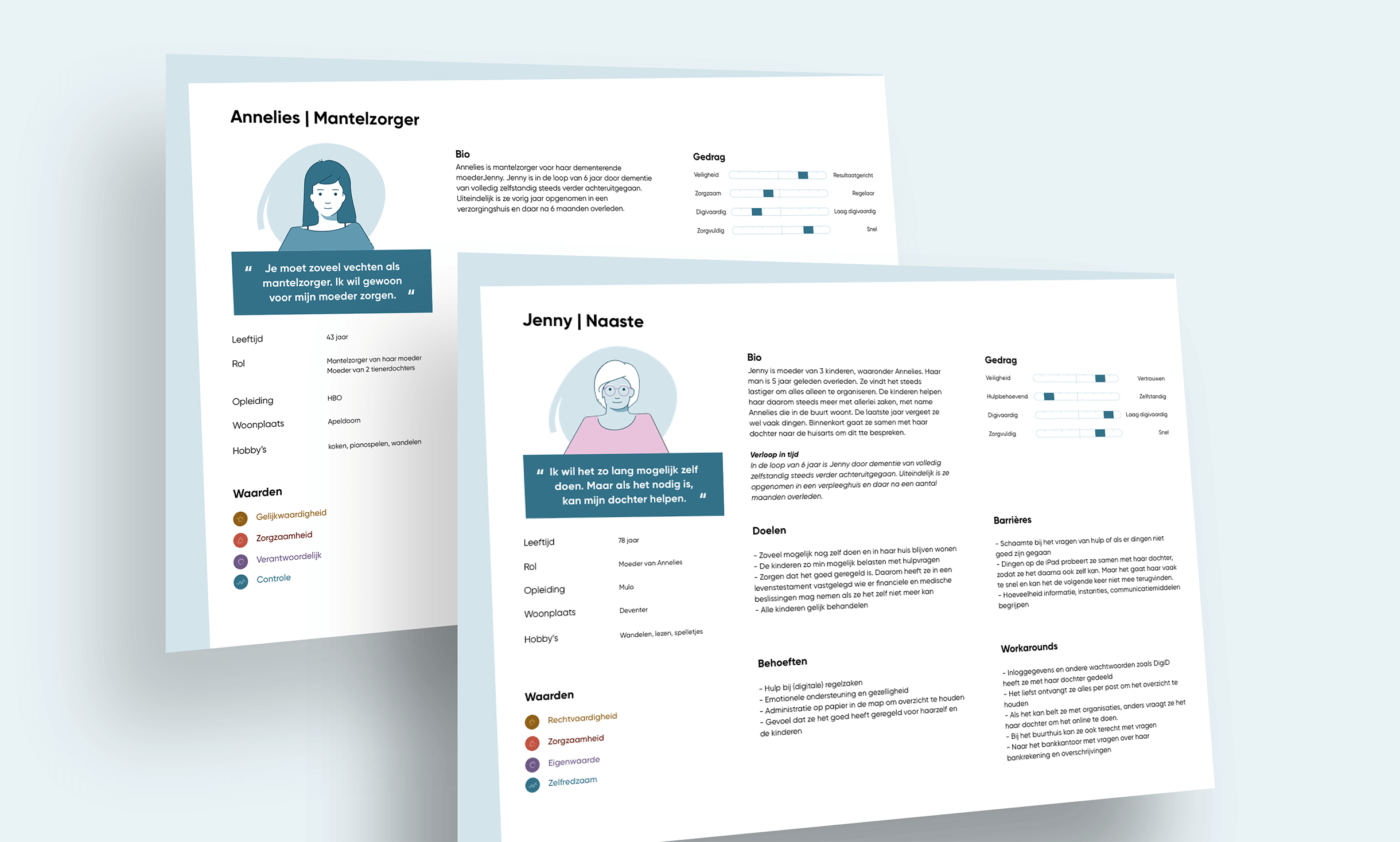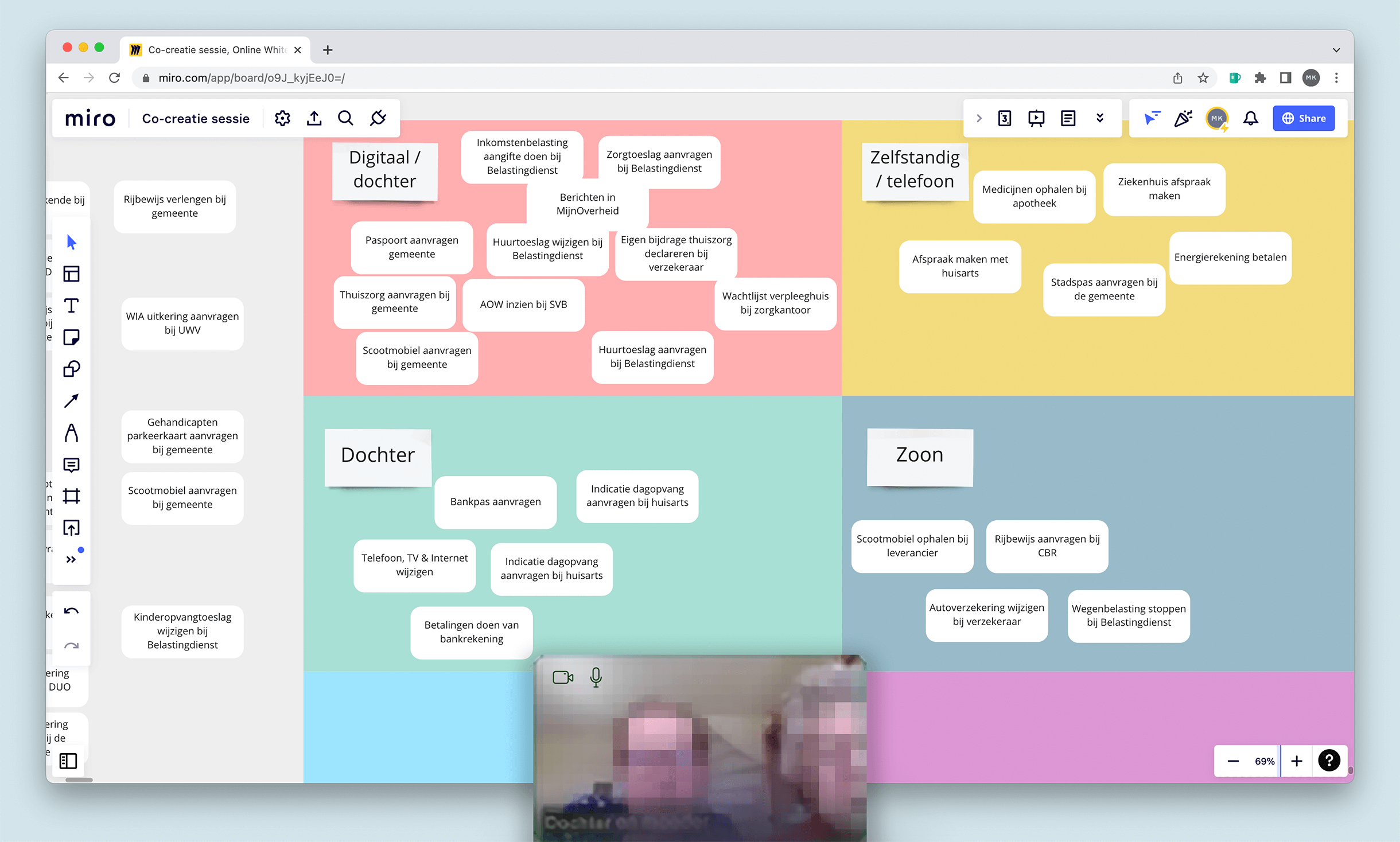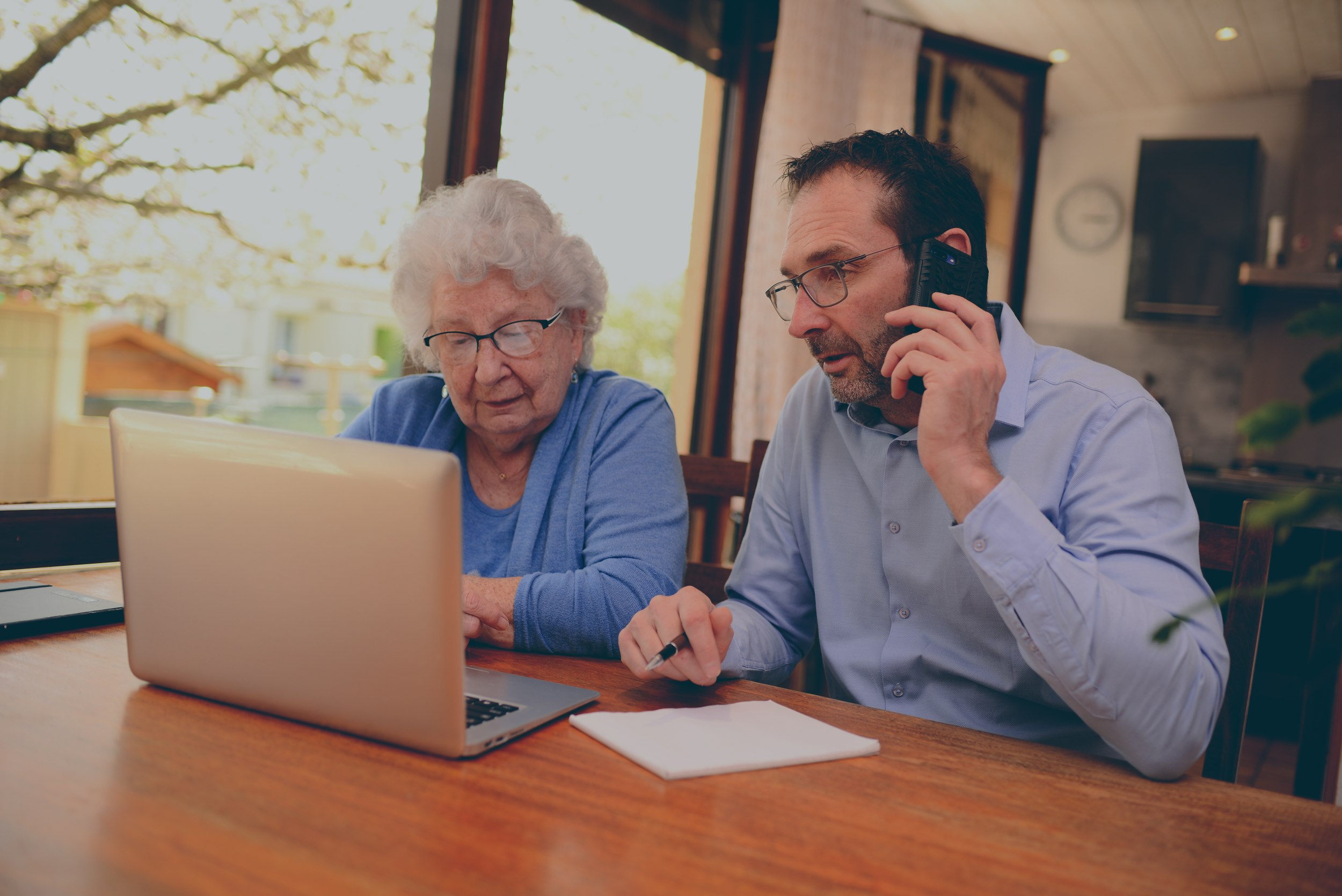Inclusiveness as a key value in digital services
Author
Marieken Kerkhoven
Published
28 October 2022
Reading time
6 minutes
We all use them on a daily basis. Apps for banking, submitting an invoice with the health insurance, viewing a message from the tax authorities in MijnOverheid. A smartphone and all its apps are not just for fun, but nowadays indispensable in organizing our lives. But what if you find them (too) hard to use?
Digital convenience not easy for everyone
For many people, our digital society is not that easy at all. They find it complicated, get stuck in all kinds of processes, find it scary or have no access to digital resources at all. In short, they feel excluded from digital society.
But if we want everyone to be able to get along, it is important that service designers, ux designers and product owners address inclusiveness during the research and design process, and advocate for it it within organizations. This should go beyond the legal obligation to be digitally accessible to users with disabilities. (See WCAG.nl for more information on guidelines).
Research by Christine Dedding (Amsterdam UMC) shows that 1 in 4 Dutch people have difficulty to get along digitally. This can have various causes. For example, because someone is illiterate (2.5 million) due to educational disadvantage or migration background. Or due to physical limitations, such as visual impairment, deafness or old age. But also poverty, loneliness, illness, stress can occupy someone so much that there is no mental space to take action. This means that they often have to ask for the help of others to arrange important things in their lives. This makes many people dependent and also vulnerable.
"Loneliness is often the biggest problem. When you're with someone, you feel more encouraged to try and work it out together. On your own, that's too hard."
Aid worker MEE Foundation
As a designer or product owner, how do you take into account many different target groups and their needs? Also, how do you ensure sufficient attention and urgency within organizations, stakeholders and designers, when developing new services and improving existing ones. How do you include all target groups, even those that are less obvious?
It is often more difficult and often takes more time to find respondents, understand the problem and come up with solutions. Often a digital solution is logical or the most innovative, but is not accessible to everyone. What can we do as designers to make inclusiveness more part of the design process?
Help from others with regulatory matters
For a project for the municipality of Amsterdam, Informaat has carried out a project about 'Voluntary authorization' for people who need help from others, informal care givers or care providers, in in arranging matters with local government institutions. This concerns, for example, elderly people with dementia who receive help from their children when they have to move to a nursing home. But also younger people with mild intellectual disabilities (estimated 1.1M, Knowledge Center LVB) who don't have a (reliable) network. Or single moms who try to make ends meet and are entitled to all kinds of allowances (which you have to apply for).
In the Netherlands, 11% receive help from a caregiver and 9% from professional assistance. During a life event such as moving house or a divorce, a lot has to be arranged. Many forms have to be filled out in often non-user-friendly systems at many different organizations. And then, on top of that all, the user often also has to log in with DigiD.
Two sides of digitization
In my role as a service designer, during many in-depth interviews, co-creation and validation sessions, I learned that digitization can represent different values. For the informal caregiver, being able to arrange things online for his or her loved one gives a lot of independence and convenience, because it can be done at times that suit them best, or even outside office hours.. But digitization also means more questions to deal with for the informal caregiver. For the loved one, the lack of human help and self-confidence, values (which are important to them), cause fear and uncertainty, so that they tend to drop out and call in the help of a caregiver more often.
On the one hand, something like DigiD is a way to guarantee security. But what if securiity also means exclusion? One in ten Dutch does not sufficiently understand the digital services of the Dutch government. One of the respondents during our research sums up this feeling nicely: "When I see the DigiD logo, the fear sweat breaks out. Soon I'll be doing something wrong."

I think, as a designer, it is important to challenge yourself and your team to look at the consequences of your design from different perspectives. Below are some ways in which you can do that.
For users, with users
It is important to include all these perspectives in the research and design process. We have spoken to interest groups and aid agencies. For example, we have benefited a lot from the discussions with the MEE Foundation. They are committed to people with disabilities including LVB and took us through the characteristics of this group and their challenges.
Early in the process, we enlisted the help of the ABC Foundation, which is committed to people with low literacy. With respondents from their test panel, we tested a first version of the concept. First of all, we have made the scenarios less extensive. Scenarios are difficult for a respondent to relate to as they are, because they are often abstract and do not quite reflect their own situation. So we personalised the prototypes for the people we tested with, putting their own names in it.. Especially language, videos, icons and a reading function are functionalities that are very much appreciated. It helps to understand complex content more easily.
In the solution phase, we also regularly engaged users in co-creation sessions. For example, in a card sort session with mother and daughter, we asked how they would divide tasks amongst each other. This gave us a lot of insight into their considerations and mental models. At the same time, we also got a glimpse into the relationship between people, the warmth and the care they have for each other to arrange it well for each other. That was often heartwarming and at times also very funny. Co-creation is an indispensable method to jointly arrive at new perspectives and solutions that can really work for people. It is therefore crucial to design with people, not for them.

Real people should also be approachable
All the studies strongly showed that people find the possibility of human contact very important. A counter where they can go, a phone number they can call if they are not sure if something has gone wrong. As a service designer, you would do well addressing the value of 'personal attention' consistently in the design of the entire journey, for example through a physical counter or customer support. Also try to convince your client that a human helpline must always be available. Avoid providing only a digital route remains.
It starts with awareness of inclusion, or the existence of exclusion, in organizations, among stakeholders but also among designers. We all have blind spots and seem to be sitting in our own bubble. Ensure diversity in the team and in the organization and give the service a human touch, for instance by showing the faces of your support workers. You can also do this by creating personas for less 'obvious' target groups. During demos or presentations, show videos of (anonymised) user tests and how the product or service is being used. If privacy is an issue, you could consider giving participants diaries to document their personal experiences in a more anonymous way.
At the municipality of Amsterdam, we invited all interviewees and participants in user tests for online sprint demos. These so-called 'living personas' created awareness and also recognition among stakeholders. For example, it was only at that moment that a number of people realized that they were actually informal caregivers themselves.
Tips to get started
- Start: inclusiveness is a quite broad topic. Don't let this paralyze you, just start somewhere. Something is better than nothing and you’ll see you always plant a seed.
- Always: do not only test the final concept or product, but also involve less 'obvious' target groups in every phase of the design process. Evaluation of an existing service creates awareness in an organization for the users who have difficulty using the service.
- Personal: Create awareness among team and stakeholders and picture your target groups vividly. Invite interviewees for demos and presentations, take photos, video, quotes, diary studies.
- Together: design in co-creation, not for but with the user. This will always make the solution better. It's also a lot of fun and inspiring.
- Human: Always include human help in the design. Take the opportunity as a service designer to design the entire journey, not just digital channels. So make values such as 'human personal attention' and 'helpful' concrete.
- Context: Dive deep into the whole context of people. What you do as a designer is just one thing in people's complex lives.
Is there someone in your own environment who is struggling to keep up with today’s digital world? Wouldn't it be nice if he or she felt included and could come along? Let's make the digital world around us more inclusive together! Why not discuss with your team what you can do right away?
About the author

Inclusivity
UX
Service Design




